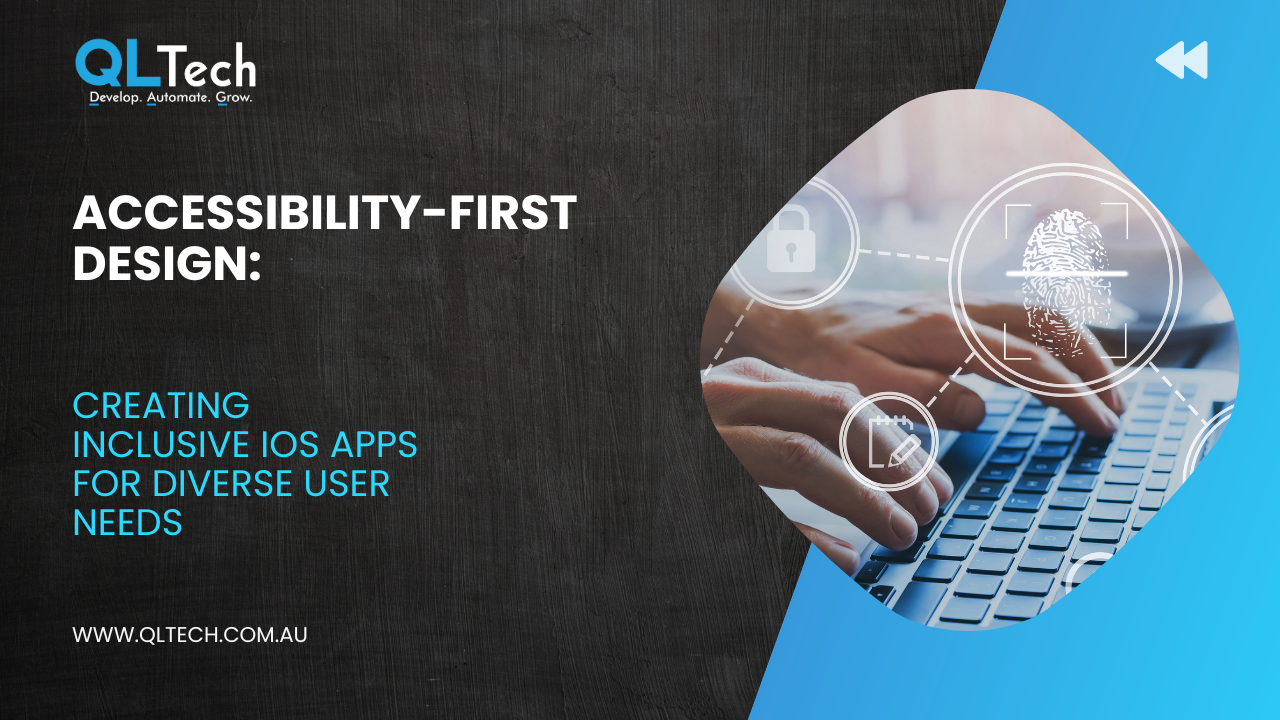Creating accessible iOS apps is essential for ensuring that all users, including those with disabilities, can access and use your app effectively. This article outlines best practices and tools for building iOS apps that are inclusive and accessible to everyone.

- Understand Accessibility Guidelines:
Familiarise yourself with the accessibility guidelines provided by Apple, including the iOS Accessibility Programming Guide. Understanding these guidelines is crucial for designing and developing apps that meet accessibility standards. - Use Semantic Elements:
Use semantic elements such as labels, buttons, and headings to provide clear and meaningful information to users of assistive technologies like VoiceOver. Ensure that elements are properly labeled to convey their purpose and function. - Provide Text Alternatives:
Include descriptive text alternatives for images, buttons, and other non-text elements using the accessibilityLabel and accessibilityHint properties. This allows users with visual impairments to understand the content and functionality of your app. - Implement Dynamic Type:
Support Dynamic Type to allow users to adjust the text size according to their preferences. Use scalable fonts and ensure that the layout remains readable and usable at different text sizes. - Ensure Color Accessibility:
Choose color combinations that provide sufficient contrast for users with low vision or color blindness. Test your app’s color scheme using tools like Apple’s Accessibility Inspector or online contrast checkers. - Keyboard Navigation:
Ensure that all interactive elements in your app are accessible via keyboard navigation. Use the UIAccessibilityTraitKeyboardKey trait for custom buttons and controls to make them accessible to keyboard users. - Provide VoiceOver Support:
Test your app with VoiceOver to ensure that all interactive elements are accessible and provide meaningful feedback. Use the accessibilityTraits property to specify traits such as buttons, links, or headings for VoiceOver users. - Test with Accessibility Features Enabled:
Regularly test your app with accessibility features enabled to identify and fix any accessibility issues. Use the Accessibility Inspector tool in Xcode to simulate various accessibility scenarios and ensure compliance with accessibility guidelines. - Utilise Assistive Technologies:
Take advantage of iOS features like VoiceOver, Switch Control, and Voice Control to provide alternative interaction methods for users with disabilities. Design your app to work seamlessly with these assistive technologies. - Accessibility Testing:
Conduct thorough accessibility testing with real users who have disabilities to gather feedback and identify areas for improvement. Consider involving accessibility experts or organisations specialising in accessibility testing. - Use Accessibility APIs:
Leverage iOS Accessibility APIs to customise accessibility features and enhance the user experience for people with disabilities. Explore features like UIAccessibilityContainer protocols, UIAccessibilityElement, and UIAccessibilityCustomAction for advanced accessibility customisation.
Conclusion: By following best practices and utilising the tools and features provided by Apple, you can create iOS apps that are accessible to users of all abilities. Building accessibility into your app not only ensures compliance with accessibility standards but also enhances the usability and inclusivity of your app, making it accessible to a wider audience.





